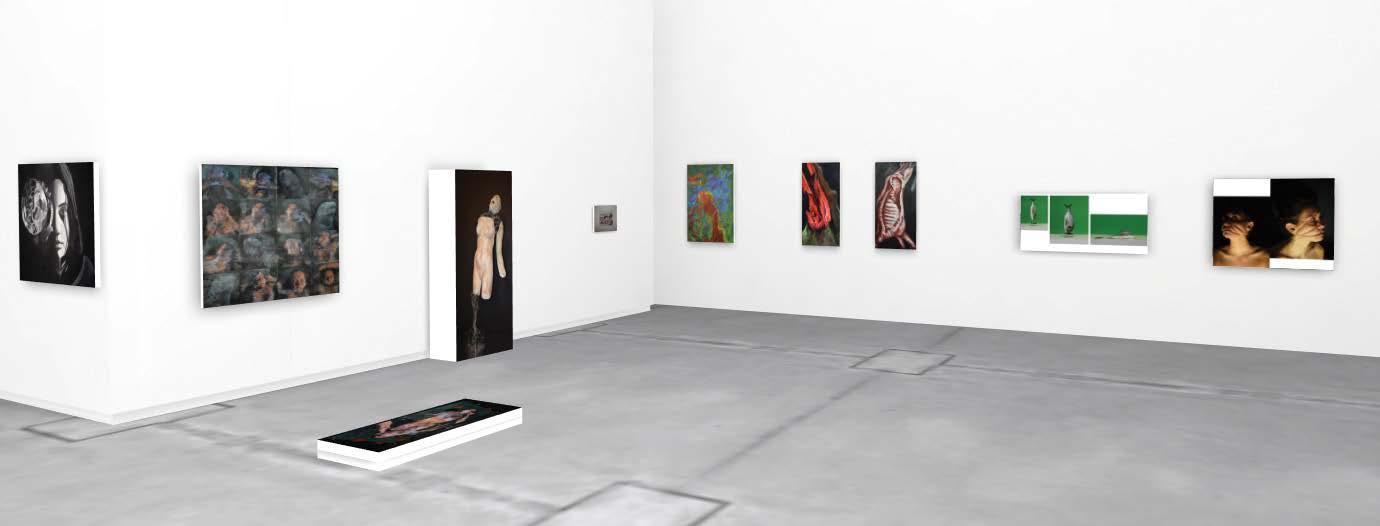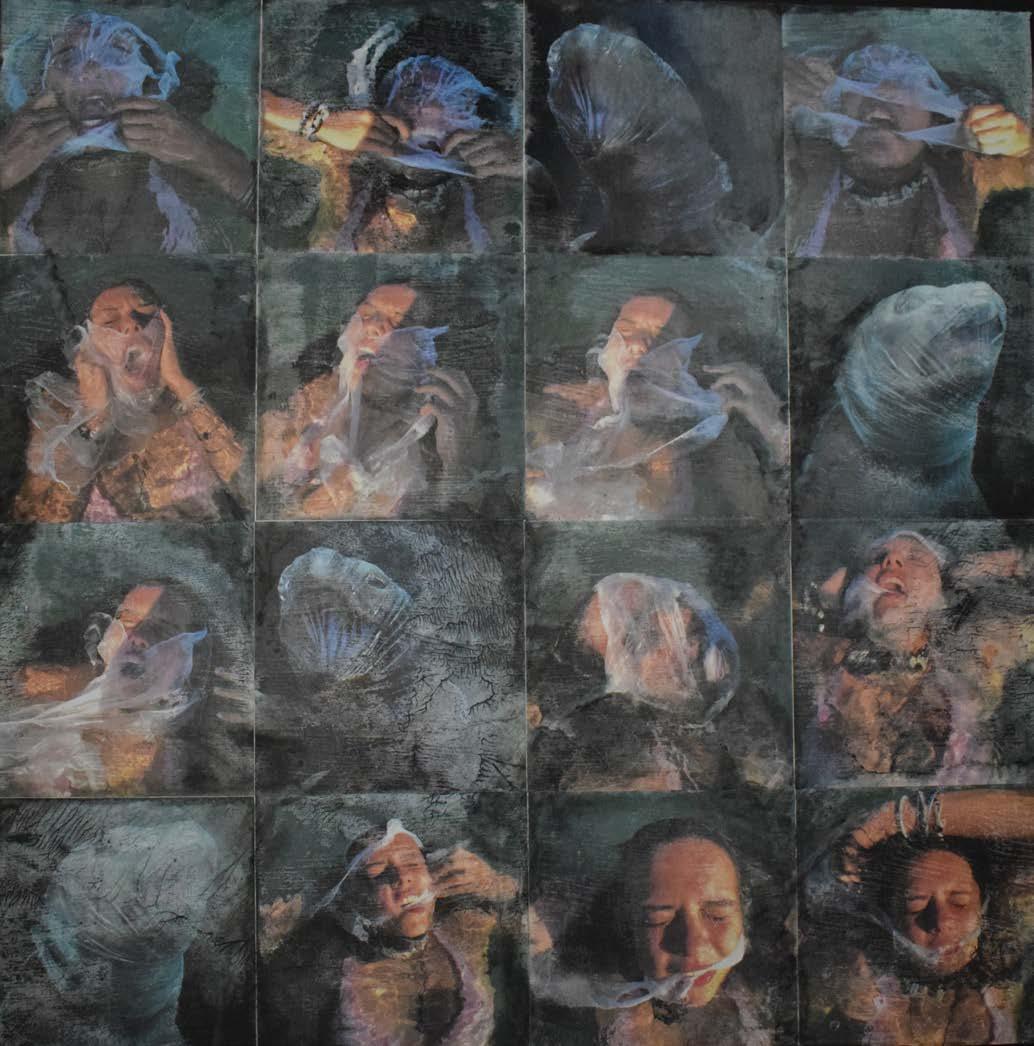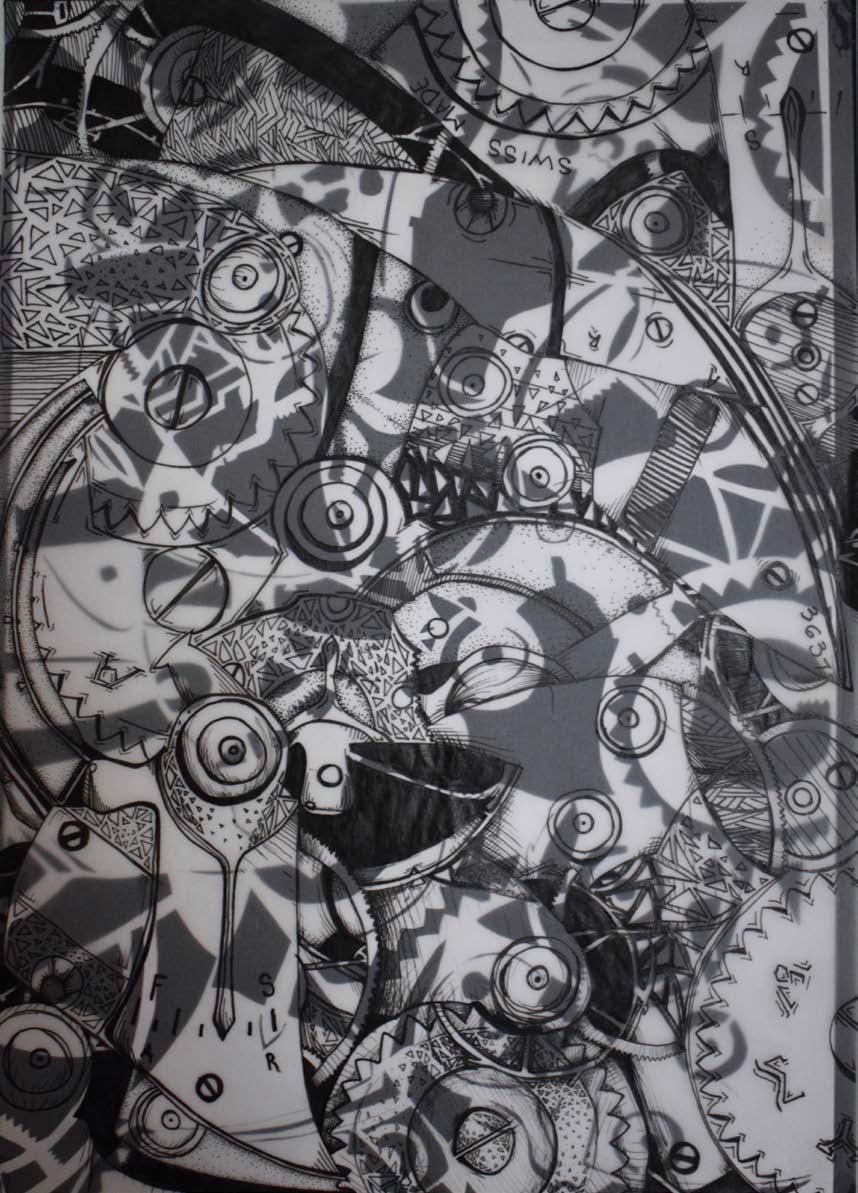
8 minute read
Virtual IB Art Exhibition 2020
on the 31st of March was cancelled due to covid-19 and the closure of the school. It was a very stressful period for us since the Exhibition was not only an event anticipated by the students, their parents and friends but mostly because it was part of the student’s final exam. The Exhibition is one of the three IB Visual Arts components worth 40% of the total grade. According to the IB expectations the selection and arrangement of artworks need to convey an understanding of the relationship between the artworks and the viewers as justified in their curatorial rationale, thus the choice and impact of the settings are very important. Due to the new unfortunate circumstances and following the new IB suggestions we explored alternative options. Through collective effort students were empowered to continue utilizing technology to find technical solutions for best virtual results. Most students created their exhibition digitally and one student set it at home which she then documented. The artworks were digitally placed in a pre planned order with some difficulty on the 3D artworks. In the one case that there were two videos (a video game and a video animation) displayed, frozen screenshots were placed instead.
From the virtual exhibitions we took screen shots that accompanied the students’ portfolios to the examiners. In addition with a lot of excitement we managed to share their exhibitions through videos captured from the virtual spaces, showcasing them

by Sophia Soseilos, Academy Visual Arts Faculty
Our school’s planned Visual Arts Exhibition
in the website for the rest of the ACS community. This year our IB visual Arts students were: Suami Dekker (HL), Nefeli Naoum (HL), Sabrina Saboya (HL) and Tural Abdullayev (SL). They all worked with their own distinctive style and dealt with different issues; personal explorations, visualization of time, environmental concerns and social imbalance.
The following texts are part of their curatorial rationale:
“Through my art, I explore myself, I am trying to form a connection with myself and my body, but also not only be limited to myself, I am trying to understand the universe around me, and my own subconscious. I like to be vulnerable, and to show my thoughts, in a way it is a catharsis or a confession of the different faces that I have, and that everyone explores in their own way when they are honest to themselves. These contradictions that I find in myself, I challenge myself to shed light on, and in the process I discover more about myself.” Suami Dekker
“My art in the past two years has revolved around the visualization of time. I explored this subject by breaking it up into cyclical, linear and vertical time. Western societies have established a linear format of time, based on sequential numbers as opposed to cycles that define time, based on experience. Such cycles are clearly seen within nature (cycle of life, cycles of seasons, etc), as well as the universe (i.e.: cycles of the moon/sun- planet movement). Parallel to these, there is the physics understanding of vertical time which exists within planes that co-exist. I aim to visualize time through my experiences, both in two-dimensions as well as three. My process led me to define this notion, with a focus on death and mourning.” Nefeli Naoum
“Humans coexist with animals and plants but due to our activities, this balance is disrupted, leaving Earth in urgent threat. Many species are close to extinction. Pollution is everywhere. Oceans are full of plastic, debris and oil spills. Forests are diminished. Since I was very young, I have been conscious about the environment and animals in particular. I knew I had to fight for the voiceless. I stopped eating red meat when I was eight years old and became vegan at thirteen. I convinced my family to go vegetarian by educating them through brutal videos, showing the negative effects our actions cause. Seeing these catastrophic acts took a very big toll on me; I knew I wanted to make a change. Every piece in this exhibition shows my concern relating to the notions above. I not only feel passionate about my work, but I am able to use
this media as a platform to raise awareness to this leading problem in our world today.” Sabrina Saboya
“My exhibition has a central premise of an imbalance. The concept is in every piece, whether in formal qualities or message, there is a feeling of unfairness that I wanted to convey. But at the same time I didn’t want the tone to be too dark, so humor is used throughout to bring the mood back up. It’s easier to talk to someone if you are on the same page, and turning really serious (as some individual pieces are) I find is an easy way of losing that common ground with the viewer. The occasional humor and dramatization hopefully lifts the tone, and makes the pieces ‘talk’ more to the viewer. This is not to say that populist art is something to aspire to, but instead that forging connection demands self-awareness.” Tural Abdullayev
■
Tural Abdullayev exhibition

Nefeli Naoum exhibition

Sabrina Saboya exhibition


Suami Dekker

Sabrina Saboya Nefeli Naoum


Tural Abdullayev



Quality Education During COVID-19

by Evelyn Pittas, Academy, English Faculty
UNESCO claims that almost 1.3 billion students have been affected worldwide by the COVID-19 pandemic.1 Massive school closures have occurred globally to prevent the spread of COVID-19. Students at all levels are having their education disrupted at an unprecedented intensity. ACS Athens is no exception, but unlike most educational institutions, ACS Athens had the ability to continue and keep the pace of the education and well-being of its students. An entire community of ACS Athens students, administrators, teachers, counselors, staff, and families came together to ensure quality education remains at the heart and soul of everything while maintaining positive and innovative virtual learning experiences for all. The entire school adjusted to virtual learning without notice and much success. Virtual learning is a reality we must deal with, work in, and overcome together as no one knows for sure when or if things will return to normal. We are now faced with miles and miles of Internet cable and a computer screen, instead of a room full of students with their teacher. This is the new normal. One thing is for sure: our world, as we know it, has become very small during this pandemic. Our educators not only continued to virtually teach the world’s knowledge, but they also searched for lessons across all disciplines from this current catastrophe, asking our students to act and think as conscious global citizens. Many of us have had unfavorable experiences before, but no one has ever experienced this type of global disaster we are now enduring. A cure will be discovered, even though our modern world brings multiple threats that we need to understand and take seriously. Ending hunger and poverty in all its forms, achieving healthy lives and gender equality, ensuring clean water and sustainable consumption, promoting economic growth, and strong institutions are all side-effects of the global economy we all benefit from. Scientists must now face the reality of the deaths from this pandemic. As educators, we are held responsible for ensuring that the expertise needed to maintain this complex world continues to be stimulated and interconnected. We need to do that face-to-face when we can and virtually when we must. ACS, Athens educators not only recognize the value of supporting students’ social and emotional development, but they also are aware of their performance in academics. Teachers’ support is important not only for students’ academic success but also for their ability to deal with stressful situations. Each educator places the student at the center of the circle, the center of the conversation, and builds around them. This commitment to student-centered teaching and learning continued even when the format of instruction shifted to virtual. At ACS, Athens we want our students to do well, enjoy learning, experience success, and be happy. Children need to know that learning is important and valued, not just so they can get a job, but for its own sake. As conscious citizens, our students have become resilient, have taken responsibility for their own actions and understood that they can recover and learn from setbacks and mistakes. They learned that they can bounce back from adversity. Perhaps what children need the most though, is love and security, especially now. Children need to know that they are liked and that their good qualities are admired; they need to be listened to and respected. One of the most powerful rewards for children is the care, interest, and attention they receive from their teachers. This teaches them security, self-esteem, empathy, and seems to enclose them in a cloak of invulnerability against the difficulties of life. Our children are the most precious possessions in our lives. They are the joy of the present and our hope for the future. We teach them to learn, give them resilience, help them grow with discipline – and love them with all our heart! Our role as a conscious global citizen is to recognize what we need and want in life and to know what we can live without in order to pass it on to the next generation. We must learn and understand how the world is changing, how education, wellness, health, gender equality, sanitation, economic growth, innovation, sustainability, climate, and above all international cooperation is affected. In the midst of this new normal, the most important lesson has the power to change our ways moving forward. As conscious global citizens, this has become our responsibility towards quality education during such unforeseen times.









